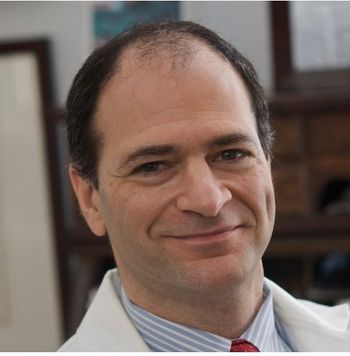
High Dietary-Fat Link to Skin Cancer Loses to Scrutiny
HOBART, Australia - The data suggesting that a high-fat diet increases the risk of skin cancer were never too substantial, and now they are even thinner, according to Australian researchers.
HOBART, Australia, May 30 - The data suggesting that a high-fat diet increases the risk of skin cancer were never too substantial, and now they are even thinner, according to Australian researchers.
Indeed, the results of two observational studies using the same participants, but different methodologies, suggested that a high-fat diet may even have some protective effect, according to Robert Granger, DrPH, of the Menzies Research Institute here.
Earlier case-control and cohort studies of the issue have had mixed results, Dr. Granger and colleagues noted in the open-access online journal BMC Cancer, although a 1995 interventional study in Texas suggested that a low-fat diet protects non-melanoma skin cancer patients against new skin cancers.
To test the link, Dr. Granger and colleagues conducted a case-control study, with 652 patients with either cutaneous malignant melanoma (CMM), basal cell carcinoma (BCC), or squamous cell carcinoma (SCC), and 471 healthy controls.
The participants were categorized by responses to questions concerning the frequency of consumption of common fat-containing foods into tertiles of fat intake measured by the Dobson short fat questionnaire - 1 to 21, 22 to 28, and 29 to 51.
Then the participants were followed prospectively in a cohort study for between 56 and 80 months for a new non-melanoma skin cancer.
Neither study supports the notion that a high fat intake increases the risk for skin cancer, Dr. Granger and colleagues said.
In the case-control study, "uniformly for men and women and for each type of skin cancer, the cases had lower odds of higher fat intake than did controls, though mostly without reaching statistical significance," Dr. Granger and colleagues found.
But with all types of cancer and both men and women combined:
- The odds ratio for cancer in people with a medium fat score (21 to 28) was 0.76, with a 95% confidence interval from 0.52 to 1.03.
- The odds ratio for a high fat score (29 to 51) was 0.62, with a 95% confidence interval from 0.45 to 0.85.
- The p-value for the linear trend was less than 0.01.
In the cohort study, the researchers used those with the lowest fat intake (1 to 21 on the Dobson questionnaire) as a reference group. The analysis found:
- Among cases who had previously had CMM, the incidence rate ratio, compared with the reference group, was 0.72 for the medium fat group and 0.86 for the high fat group. The P-value for the trend was 0.64.
- Among cases who had previously had BCC, the incidence rate ratio was 0.67 for the medium fat group and 0.83 for the high fat group. The P-value for the trend was 0.51.
- Among cases who had previously had SCC, the incidence rate ratio was 0.79 for the medium fat group and 0.83 for the high fat group. The P-value for the trend was 0.61.
For controls, the corresponding incidence rate ratios were 5.5 for the medium fat group (with a 95% confidence interval from 0.7 to 45.1) and 2.9 for the high group (with a 95% confidence interval from 0.3 to 26.7). The wide confidence intervals arise, the researchers noted, because only 12 controls had a NMSC during follow-up.
The study's strengths included its ability to examine three types of skin cancer using the same measure of fat intake, as well as the prospective nature of the cohort study. On the other hand, Dr. Granger and colleagues noted, the fat measure is relatively imprecise, and does not break down intake into its constituents - total fat, saturated fat, and mono- and polyunsaturated fats.
The bottom line, the researchers said, is that "we found no evidence that high fat intake increases the risk of development of melanoma and non-melanoma skin cancers."
Indeed, they added, "our results suggest a risk reduction for high fat intake."
Newsletter
Enhance your clinical practice with the Patient Care newsletter, offering the latest evidence-based guidelines, diagnostic insights, and treatment strategies for primary care physicians.

































































































































































































































































































